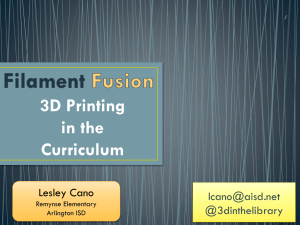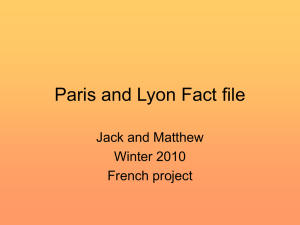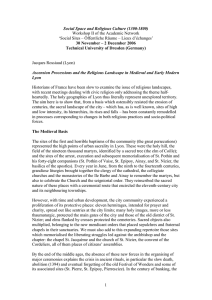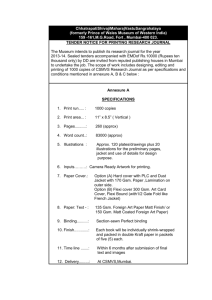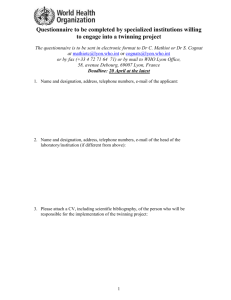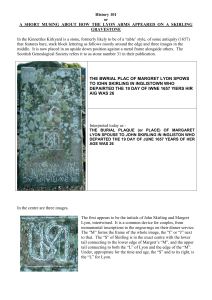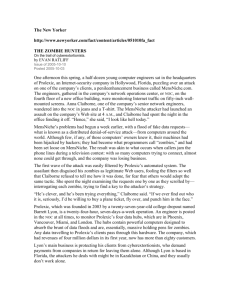REPORT OF THE VISIT OF THE PRINTING MUSEUM Location: The
advertisement
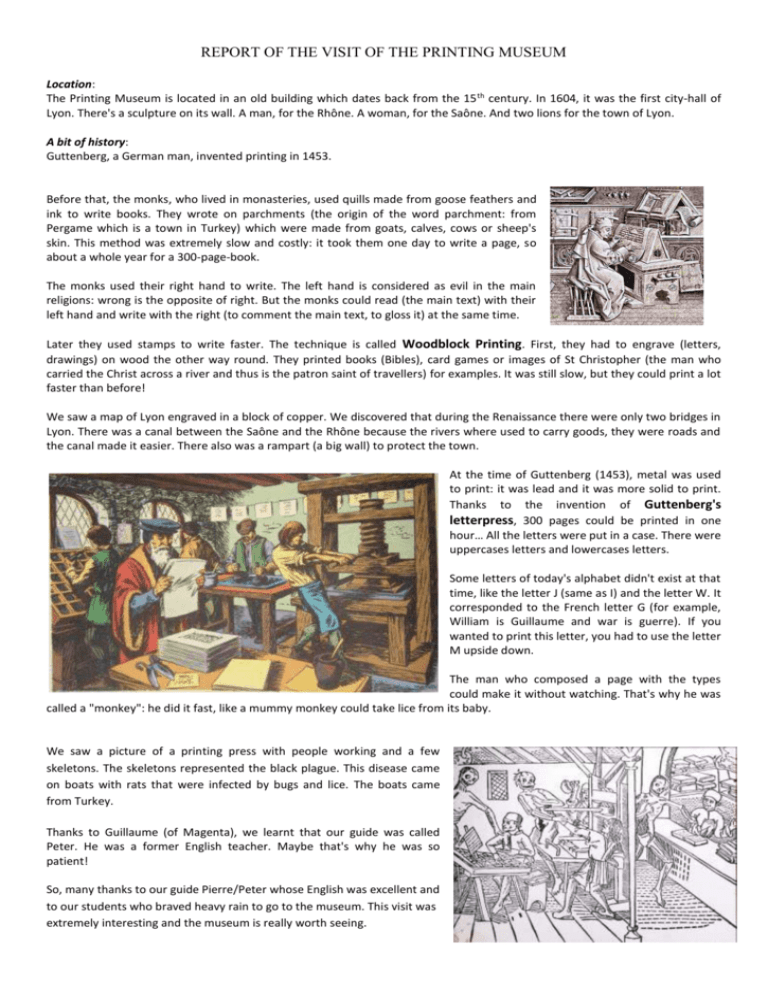
REPORT OF THE VISIT OF THE PRINTING MUSEUM Location: The Printing Museum is located in an old building which dates back from the 15 th century. In 1604, it was the first city-hall of Lyon. There's a sculpture on its wall. A man, for the Rhône. A woman, for the Saône. And two lions for the town of Lyon. A bit of history: Guttenberg, a German man, invented printing in 1453. Before that, the monks, who lived in monasteries, used quills made from goose feathers and ink to write books. They wrote on parchments (the origin of the word parchment: from Pergame which is a town in Turkey) which were made from goats, calves, cows or sheep's skin. This method was extremely slow and costly: it took them one day to write a page, so about a whole year for a 300-page-book. The monks used their right hand to write. The left hand is considered as evil in the main religions: wrong is the opposite of right. But the monks could read (the main text) with their left hand and write with the right (to comment the main text, to gloss it) at the same time. Later they used stamps to write faster. The technique is called Woodblock Printing. First, they had to engrave (letters, drawings) on wood the other way round. They printed books (Bibles), card games or images of St Christopher (the man who carried the Christ across a river and thus is the patron saint of travellers) for examples. It was still slow, but they could print a lot faster than before! We saw a map of Lyon engraved in a block of copper. We discovered that during the Renaissance there were only two bridges in Lyon. There was a canal between the Saône and the Rhône because the rivers where used to carry goods, they were roads and the canal made it easier. There also was a rampart (a big wall) to protect the town. At the time of Guttenberg (1453), metal was used to print: it was lead and it was more solid to print. Thanks to the invention of Guttenberg's letterpress, 300 pages could be printed in one hour… All the letters were put in a case. There were uppercases letters and lowercases letters. Some letters of today's alphabet didn't exist at that time, like the letter J (same as I) and the letter W. It corresponded to the French letter G (for example, William is Guillaume and war is guerre). If you wanted to print this letter, you had to use the letter M upside down. The man who composed a page with the types could make it without watching. That's why he was called a "monkey": he did it fast, like a mummy monkey could take lice from its baby. We saw a picture of a printing press with people working and a few skeletons. The skeletons represented the black plague. This disease came on boats with rats that were infected by bugs and lice. The boats came from Turkey. Thanks to Guillaume (of Magenta), we learnt that our guide was called Peter. He was a former English teacher. Maybe that's why he was so patient! So, many thanks to our guide Pierre/Peter whose English was excellent and to our students who braved heavy rain to go to the museum. This visit was extremely interesting and the museum is really worth seeing.
